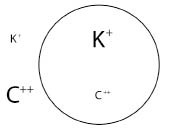 :dropcap_open:T:dropcap_close:his month, I begin a series of 24 articles each designed to highlight a set of symptoms that collectively point at a specific visceral problem that is perpetuating muscle contractions, loss of joint range of motion, and reoccurring structural misalignments that have become chronic and defy permanent correction. It is exactly these problems that cause patients to seek alternatives to continuing chiropractic care. I believe our profession must, in addition to specializing in structural disorders, begin identifying these underlying visceral problems and specialize in restoring normal function before disease entities can be identified.
:dropcap_open:T:dropcap_close:his month, I begin a series of 24 articles each designed to highlight a set of symptoms that collectively point at a specific visceral problem that is perpetuating muscle contractions, loss of joint range of motion, and reoccurring structural misalignments that have become chronic and defy permanent correction. It is exactly these problems that cause patients to seek alternatives to continuing chiropractic care. I believe our profession must, in addition to specializing in structural disorders, begin identifying these underlying visceral problems and specialize in restoring normal function before disease entities can be identified.
Throughout 2010, my articles identified a series of tests for screening structural problems that may have an underlying visceral cause. I ended 2010 by discussing spinal flexibility tests and then began last month discussing the effects of sympathetic and parasympathetic stimulation. That leads me to this month’s article.
The effects of autonomic stimulation are well known and possible causes easily recognized. But what is often overlooked is the possibility that, while the central nervous system may be calling for increased sympathetic activity on the part of one or more organs, the organ or tissue may not be able to respond adequately due to a relative potassium deficiency. Let’s examine what is required nutritionally for organs to respond appropriately to autonomic stimulation. I’ll discuss sympathetic dominance this month and parasympathetic dominance next month.
Just as an antagonistic relationship exists between H+ (acid) and OH- (alkaline), so does an antagonism exist between potassium and calcium within the cells. The ability or inability of the organ/tissue to respond appropriately to autonomic stimulation rests on the balance between those minerals. Normally, the concentration of calcium ions is higher in the extracellular fluids, while the concentration of potassium ions is higher within the cells.
Adequate potassium within the cells is necessary for the cell to respond appropriately to parasympathetic stimulation.
A diet with adequate alkaline minerals, provided by fresh fruits and vegetables, is needed to supply those minerals including potassium.
A diet high in simple sugars depletes alkaline minerals and is largely responsible for the potassium deficiencies seen in our offices.
The symptoms of a potassium deficiency are stiff sore joints, constipation, inability to concentrate or think clearly, and cardiac arrhythmias. Also sodium is, of course, an alkaline mineral whose ions are needed in the extracellular fluid. While the body produces aldosterone and vasopressin to maintain sodium, the dietary stress placed on the body can still produce a mild deficiency. The symptoms of a mild sodium deficiency are almost insignificant, but do result in movement of potassium out of the cell into the extracellular fluid to maintain homeostasis. This causes a compensatory movement of calcium into the cells.
 While all of this may seem inconsequential in a structural practice, it does result in an inability to respond appropriately to parasympathetic stimulation with an apparent sympathetic dominance and the symptoms of Fright-Fight-Flight are well documented. Every day, we see patients who are irritable and argumentative, or cannot adequately tolerate stress.
While all of this may seem inconsequential in a structural practice, it does result in an inability to respond appropriately to parasympathetic stimulation with an apparent sympathetic dominance and the symptoms of Fright-Fight-Flight are well documented. Every day, we see patients who are irritable and argumentative, or cannot adequately tolerate stress.
Let’s carry that scenario just a little further into a patient’s life and acknowledge the need for Chiropractic to become recognized as the profession that restores normal function and maintains health.
During sympathetic dominance, there is an increase of intracellular calcium accompanied by a deficiency of intracellular potassium. Excessive sympathetic stimulation increases the heart rate and force of contraction, as well as constricting blood vessels and elevating blood pressure. Ultimately, this results in heart disease. Pharmaceutically, calcium channel blockers are used to blunt the sympathetic nervous system and slow the progression of congestive heart failure.
A prudent nutritional approach would be early recognition of the symptoms of potassium deficiency and sympathetic dominance as seen with:
The appearance of stiff sore joints and constipation accompanied by the muscle contractions, loss of joint range of motion
The structural misalignments associated with the various visceral dysfunctions.
:dropcap_open:Let’s examine what is required nutritionally for organs to respond appropriately to autonomic stimulation.:quoteleft_close:
In addition to chiropractic care, dietary modification should be suggested by increasing the ingestion and digestion of foods high in alkaline minerals, such as fresh fruits and vegetables and reducing the consumption of simple sugars.
The following is a list of symptoms associated with a deficiency of alkaline minerals that causes the body to struggle with maintaining homeostasis in the extracellular fluids. Obviously this stress, if long continued, results in necessary compensations and the appearance of chronic degenerative conditions. How many of your patients do you recognize from the following list of symptoms related to increased dietary acidity?
Next month I will take up the 2nd article in this series of 24 – the other side of the autonomic nervous system – parasympathetic dominance.
